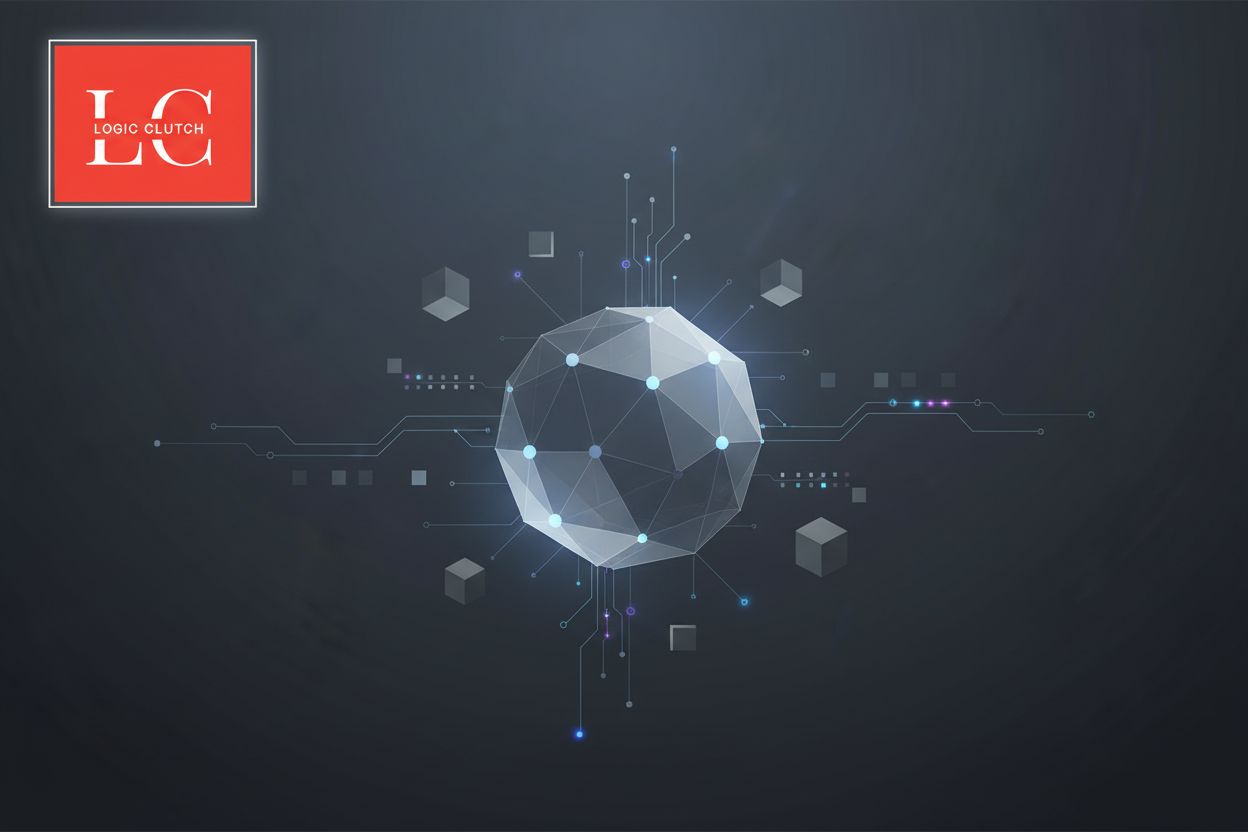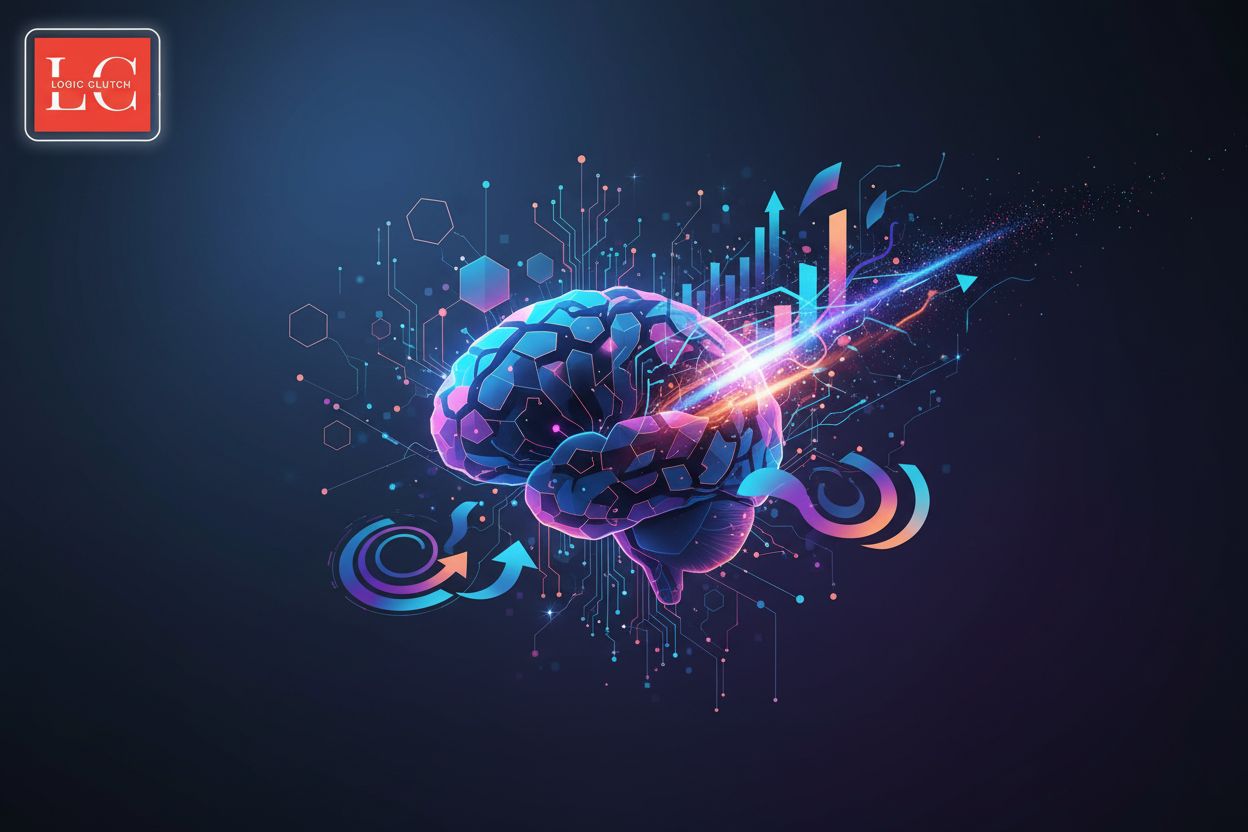Unlocking Efficiency and Innovation: A Deep Dive into AI-Powered Automated Reasoning for Enterprises
TL;DR
The Rise of AI-Powered Automated Reasoning: An Executive Overview
Imagine AI systems that not only generate content but also think through complex problems like a human expert. That's the promise of AI-powered automated reasoning, a transformative technology set to redefine enterprise operations.
AI reasoning refers to the ability of AI systems to analyze complex scenarios and derive logical conclusions. It goes beyond simple pattern recognition, enabling AI to apply structured logic and contextual understanding to solve problems. Lumenalta highlights that AI reasoning allows machines to apply structured logic, analyze probabilities, and refine conclusions.
This evolution moves from generative AI, which focuses on creating content, to reasoning AI, which emphasizes logical thinking and problem-solving. AI reasoning engines support various applications, including AI problem solving, AI decision-making, and workflow automation.
The journey of AI reasoning has evolved significantly, starting with rule-based systems and advancing to today's adaptive models. Early AI relied on fixed rules, but modern AI uses fuzzy logic, machine learning, and probabilistic methods.
AI reasoning depends on components that allow artificial intelligence to interpret data, apply logic, and generate conclusions. Knowledge representation, logical inference, machine learning integration, probabilistic reasoning, and constraint satisfaction are key.
Generative AI has limitations in high-stakes decision-making, struggling with consistency and justification. Datahub Analytics notes that while generative models excel at mimicking language, they often struggle with reasoning, consistency, and contextual decision-making.
AI reasoning ensures decisions are justifiable and consistent, crucial for cognitive automation and enhanced efficiency. AI reasoning enhances efficiency by automating complex workflows, reducing human error, and optimizing resource allocation.
For example, AI reasoning can be used in healthcare for automated diagnostics, in finance for fraud detection, and in manufacturing for predictive maintenance. Aisera explains that AI reasoning transforms AI from a basic automation tool into a sophisticated decision-making partner.
As enterprises seek more reliable and efficient solutions, AI-powered automated reasoning is poised to become a critical component. The next section will explore the specific benefits and applications of AI reasoning in detail.
Core Components and Types of AI Reasoning
AI reasoning is like giving a computer a detective's hat, enabling it to solve complex problems with logic and precision. But what exactly makes up these AI sleuths?
AI reasoning engines rely on several core components to interpret data, apply logic, and reach conclusions. These components work together, ensuring AI systems can handle complex tasks and provide reliable results.
- Knowledge Representation: AI systems need a way to store and retrieve information. They do this through frameworks like semantic networks and ontologies, which help the AI understand context and relationships between data points. Without structured knowledge, AI can't make accurate predictions.
- Logical Inference: This involves using methods like deductive, inductive, and abductive reasoning to process data. Deductive reasoning applies rules to reach definitive outcomes, while inductive reasoning finds patterns to make generalizations. Abductive reasoning helps find the most likely explanation for incomplete information.
- Machine Learning Integration: Machine learning models help refine outcomes based on data and trends. This integration allows AI systems to analyze vast datasets, recognize correlations, and enhance predictive accuracy.
- Probabilistic Reasoning: AI often deals with incomplete or uncertain data. Bayesian networks and Markov models help assess uncertainty while maintaining logical consistency. These methods assign probability values to different outcomes, refining conclusions based on likelihood.
- Constraint Satisfaction: This component evaluates variables and determines optimal outcomes within predefined parameters. This is useful in areas like scheduling, logistics, and resource allocation, where precise calculations and trade-offs are necessary.
Just as humans use different types of reasoning, AI employs various methods to analyze information and draw conclusions. Each type has its strengths and is suited for different types of problems.
- Deductive Reasoning: This applies predefined rules to generate definitive outcomes. For example, if all mammals have hair and a dog is a mammal, then a dog has hair.
- Inductive Reasoning: This identifies patterns and forms generalizations based on observed data. For instance, if every swan you've ever seen is white, you might conclude that all swans are white.
- Abductive Reasoning: This determines the most likely explanation for incomplete information. If you find a broken window and a missing vase, you might abduce that a burglar broke in.
- Analogical Reasoning: This solves new problems by comparing them to previously encountered situations. For example, if you know how to fix a bicycle, you might use that knowledge to understand how to repair a motorcycle.
- Common Sense Reasoning: This relies on everyday knowledge and experiences to draw logical conclusions. If a pot is on the stove, you expect it to be hot.
- Monotonic and Nonmonotonic Reasoning: Monotonic reasoning means conclusions don't change with new information, while nonmonotonic reasoning allows for revisions.
- Fuzzy Reasoning: This handles uncertainty and imprecision by allowing degrees of truth. For example, "the weather is warm" might be 70% true on a 20°C day.
LogicClutch specializes in providing cutting-edge AI-powered SaaS solutions tailored for enterprises. We offer comprehensive services in Master Data Management, ensuring data quality and consistency for AI reasoning.
Leverage our expertise in Salesforce CRM Solutions to integrate AI reasoning into your customer relationship strategies. Benefit from our On-Demand Development and Resource Augmentation services to build and scale AI reasoning capabilities efficiently. Explore our Custom Development services to create bespoke AI reasoning solutions that address your unique business challenges.
Utilize our Data Management and Edge Computing solutions to optimize data processing and decision-making at the edge. Harness the power of our Computer Vision AI capabilities for advanced image and video analysis in AI reasoning applications.
Understanding these core components and types of AI reasoning is essential for building effective AI systems. Next, we'll explore the specific benefits and applications of AI reasoning in detail.
Business Benefits and Practical Applications of AI Reasoning
AI reasoning is transforming how businesses approach complex problems, but how does it translate to tangible benefits and real-world applications? Let's explore the advantages and practical uses of AI reasoning.
AI reasoning offers several quantifiable business advantages. These benefits range from faster analysis to improved compliance.
- Faster Analysis and Response Times: AI reasoning engines can process vast amounts of complex data at speeds beyond human capability. This speed allows businesses to respond to market shifts, customer demands, and operational challenges faster.
- More Accurate Predictions and Risk Assessments: AI reasoning improves predictive accuracy by analyzing large datasets, identifying patterns, and adjusting probability models. This capability allows organizations to anticipate market trends and detect potential risks more effectively.
- Increased Operational Efficiency: AI reasoning streamlines workflows by automating repetitive tasks. This automation reduces human error, enhances consistency, and allows employees to focus on higher-value work.
- Scalable and Cost-Effective Problem Solving: AI reasoning allows organizations to scale operations without proportionally increasing costs. Adaptive AI models continuously refine outcomes based on new data, reducing resource waste and improving utilization rates.
- Improved Compliance and Governance: AI reasoning engines analyze regulatory frameworks and identify potential compliance risks. Automated compliance checks reduce the likelihood of regulatory violations, ensuring policies align with industry standards.
- Optimized Customer Interactions and Service Automation: AI reasoning enhances customer engagement through personalized recommendations and automated support systems. AI-powered engines interpret user queries, analyze sentiment, and generate contextually relevant responses.
AI reasoning has transformative potential across various industries. Let's examine some specific applications.
- Healthcare: AI reasoning supports automated diagnostics, treatment planning, and drug discovery. By analyzing patient records and identifying symptom patterns, it assists healthcare professionals in making more accurate diagnoses.
- Finance: In finance, AI reasoning aids in fraud detection, risk analysis, and algorithmic trading. AI models analyze spending behaviors and transaction histories to detect irregularities.
- Customer Service: AI virtual assistants use reasoning to deliver personalized customer interactions. Common sense reasoning helps these assistants handle ambiguous questions effectively.
- Legal and Compliance: AI reasoning supports contract analysis, regulatory compliance, and case prediction. AI-powered systems extract relevant information from legal documents and compare them against past cases.
- Supply Chain Optimization: AI reasoning enhances logistics planning, demand forecasting, and inventory management. AI-powered models analyze historical data and external factors to predict future supply needs.
- Manufacturing: AI reasoning is used for predictive maintenance, quality control, and process optimization. By evaluating equipment performance, AI systems identify wear patterns and recommend service schedules.
AI reasoning is not just a theoretical concept; it's a practical tool that delivers measurable benefits across diverse sectors. As AI technology continues to evolve, expect even more innovative applications to emerge. The next section will delve into the ethical considerations and challenges associated with AI reasoning.
Overcoming Challenges and Limitations in AI Reasoning
AI reasoning holds immense promise, but it's not without its hurdles. Let's explore the common issues and strategies for improvement.
AI reasoning systems face several challenges that can limit their effectiveness. Addressing these issues is crucial for ensuring accurate and reliable outcomes.
- Handling Incomplete or Biased Data: AI reasoning engines depend on high-quality data to generate reliable conclusions. Incomplete, biased, or inconsistent data reduces accuracy, leading to flawed predictions and incorrect recommendations. Continuous data validation and monitoring are essential.
- Balancing Interpretability and Complexity: AI systems using deep learning and probabilistic models often lack transparency. Complex AI reasoning methods improve predictive accuracy but reduce interpretability. Organizations require AI models that balance accuracy with transparency, ensuring stakeholders can trust and understand AI-generated outcomes.
- Managing Uncertainty in AI Problem Solving: Probabilistic reasoning allows AI systems to assess uncertainty, but unpredictable scenarios still present challenges. AI reasoning engines must evaluate multiple possibilities and assign confidence levels to different outcomes, requiring sophisticated probability models and adaptive algorithms to function reliably in dynamic conditions.
- Ensuring Ethical and Unbiased Reasoning: AI reasoning models inherit biases in training data, leading to unintended ethical concerns. AI needs to incorporate bias detection and mitigation strategies to prevent discrimination in automated decision processes.
- Scaling AI Reasoning without Excessive Computational Costs: Advanced AI reasoning methods require significant processing power, increasing computational expenses. Optimizing AI models for efficiency while maintaining accuracy remains challenging, especially for industries requiring real-time processing and high-speed decision support.
- Integrating AI Reasoning with Existing Business Processes: AI reasoning engines must align with enterprise workflows, regulatory requirements, and industry-specific applications. Seamless integration requires structured governance models, ensuring AI contributes to business efficiency without disrupting established operations.
Improving the accuracy of AI reasoning requires attention to several key areas. Implementing these strategies helps mitigate common issues and enhances the reliability of AI systems.
- Enhancing Data Quality: Implement continuous data validation and monitoring. High-quality data ensures AI reasoning engines generate reliable conclusions.
- Improving Explainability: Use interpretable models and frameworks. Transparency in AI decision-making builds trust and understanding.
- Incorporating Contextual Awareness: Integrate common sense and domain-specific knowledge. Contextual understanding improves the relevance and accuracy of AI reasoning.
- Optimizing Algorithms: Reduce computational demands while maintaining performance. Efficient algorithms enable scalable and cost-effective AI reasoning.
- Implementing Ethical Oversight: Establish robust guidelines and ethical standards. Ethical oversight ensures AI reasoning aligns with human values and societal norms.
Addressing these challenges allows AI reasoning to function more effectively across industries. The next section will cover ethical considerations and governance.
The Future of AI Reasoning and Its Impact on Enterprise Strategy
AI reasoning is rapidly evolving, promising to revolutionize enterprise strategies. But what emerging trends will shape its future?
Neuro-Symbolic AI combines symbolic reasoning with neural networks. This hybrid approach aims to leverage the strengths of both, creating more robust and interpretable AI systems.
Common Sense Integration involves embedding common sense reasoning into AI systems. This allows AI to make more intuitive and contextually aware decisions, similar to human reasoning.
Dynamic Learning Models are being developed to enable real-time adaptation. These models can adjust their reasoning processes based on new data and changing conditions, making them more flexible and responsive.
Cross-Domain Reasoning seeks to advance AI’s ability to transfer reasoning capabilities across domains. This would enable AI to apply knowledge and strategies learned in one area to solve problems in another, enhancing its versatility.
Quantum Computing is being explored as a way to tackle complex reasoning problems. Quantum technologies could potentially solve problems that are currently intractable for classical computers, opening new possibilities for AI reasoning.
Improved Explainability will drive widespread adoption of interpretable AI models. Transparency in AI decision-making builds trust and allows for better oversight.
Enhanced Human-AI Collaboration will see AI systems acting as intelligent assistants. These systems will augment human capabilities by providing deeper insights and faster reasoning.
Increased Personalization will be a key driver, leading to hyper-personalized experiences. AI reasoning can help tailor products, services, and interactions to individual needs and preferences.
Autonomous Systems will be enabled by self-reasoning AI. This includes the next generation of autonomous vehicles, robots, and intelligent systems operating safely and efficiently.
Ethical and Fair AI is a critical focus. Stricter regulations and advanced algorithms will reduce bias and ensure ethical reasoning in AI applications.
Reasoning AI is not just a technological advancement; it has profound implications for enterprise leadership.
CEOs and strategy leaders should position Reasoning AI as a competitive differentiator. It's about transforming business models, not just automating tasks.
CIOs and CTOs should rethink AI architecture for autonomy and interoperability. They should shift from standalone AI models to AI systems that combine memory, logic, and tool integration.
Chief Data Officers (CDOs) must make data readiness the foundation of Reasoning AI. Prioritizing semantic data models and knowledge graphs enables logical connections across information silos.
COOs and Heads of Business Units should align Reasoning AI with operational goals. This involves mapping opportunities to deploy AI agents that enhance productivity, reduce cognitive load, or automate decisions.
Chief Compliance Officers and Legal Executives need to ensure transparency, explainability, and auditability. They should treat reasoning systems as quasi-decision makers and hold them to the same standards of documentation and compliance.
CHROs and People Leaders must build workforce readiness for AI-augmented decision-making. Training employees on how Reasoning AI works and where it adds value is essential.
Proof of Concept (PoC): Identify high-impact use cases and test hybrid models.
Pilot Programs: Scale to broader departments and evaluate ROI.
Full Production Deployment: Integrate with enterprise systems and implement oversight.
AI Governance & Ethics Layer: Establish policies for accountability and transparency.
The future of AI reasoning holds immense potential for transforming enterprise strategy. By understanding emerging trends, addressing challenges, and implementing a strategic roadmap, businesses can harness the power of AI reasoning to drive efficiency, innovation, and competitive advantage. As mentioned earlier, AI reasoning allows machines to apply structured logic and analyze probabilities to refine conclusions. The next step is to explore the ethical considerations and governance of AI reasoning.









